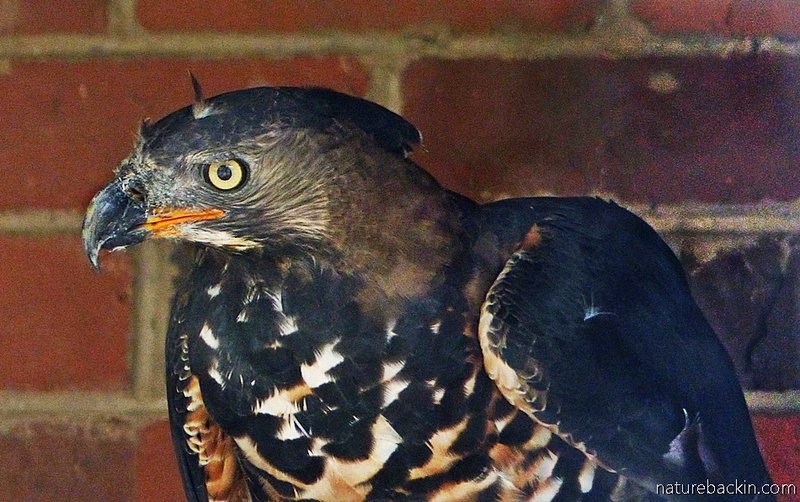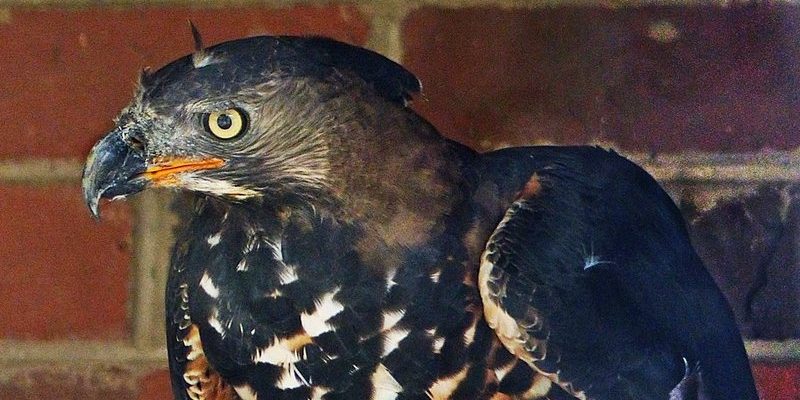
Imagine being a crowned eagle, perched high in a tree, scanning the ground below with sharp eyes. You spot a movement: a small mammal scurrying across the forest floor. With a powerful swoop, you’re airborne, effortlessly gliding toward your next meal. This imagery gives you a taste of their hunting style and dietary preferences, showcasing a blend of grace and ferocity. Let’s unpack what these magnificent birds feast on and how they go about catching their food.
The Diet of the Crowned Eagle
Crowned eagles have a diverse diet that mainly consists of medium-sized mammals and birds. You might be surprised to find that they can take down prey that is almost half their body weight! Their preferred meals typically include:
- Monkeys: These birds have been known to hunt species like the vervet monkey, which provides a good source of nutrition.
- Rodents: Small mammals like squirrels and rats make up a significant portion of their diet.
- Birds: They also eat smaller birds, making them opportunistic hunters within their habitat.
One of the fascinating aspects of the crowned eagle’s diet is its adaptability. Depending on their location, these eagles will adjust what they hunt. For instance, in areas where monkeys are scarce, they might rely more on rodents or birds. This flexibility is crucial for survival, especially as food sources change with the seasons.
How Crowned Eagles Hunt
So, how do crowned eagles catch their prey? Their hunting techniques are a blend of patience and power. These eagles often use a strategy called “still hunting.” Picture them sitting quietly for long periods, scanning the terrain for movement. This method requires a keen eye and a lot of patience.
Once they spot a potential meal, crowned eagles take to the sky. They can reach impressive speeds during their hunt, utilizing their powerful wings to swoop down. You might be wondering, how do they ensure success? Well, crowned eagles have incredible eyesight—up to eight times better than a human’s. They can spot prey from hundreds of feet in the air, giving them a significant advantage.
When they finally dive for the kill, crowned eagles use their sharp talons to grasp and immobilize the prey. Their talons are not just sharp; they’re strong enough to pierce through the tough skin of animals like monkeys. This combination of speed, stealth, and strength makes them fierce predators in the wild.
Foraging Behavior of Crowned Eagles
While hunting is an essential part of their feeding habits, crowned eagles also engage in foraging, especially when food is scarce. Foraging involves searching for food in the environment rather than actively hunting. It’s a more relaxed approach, allowing the eagle to utilize what’s available.
Crowned eagles may forage for fruits, insects, or even carrion when their usual prey isn’t around. This behavior showcases their adaptability and resourcefulness. For instance, if the seasonal rains bring an influx of insects, they might take advantage of this food source before returning to their main diet.
Understanding their foraging behavior can also highlight the importance of maintaining healthy ecosystems. If food sources diminish, crowned eagles might struggle to survive, reinforcing the need for conservation efforts in their habitats.
Nesting and Feeding Young
Another fascinating aspect of crowned eagles is how they care for their young. These birds typically mate for life and build large nests high in tall trees or cliffs. When the female lays eggs, both parents play a role in feeding the chicks after they hatch.
Initially, they’ll bring small prey items back to the nest. As the young eagles grow, the parents transition to larger meals. You might picture a parent eagle swooping down with a small monkey or rabbit, providing the necessary nutrients for their growing chicks. This nurturing aspect of their behavior highlights the strong family bond they share, ensuring the survival of the next generation.
Not only does this parental care impact the survival of the chicks, but it also teaches them valuable hunting skills. As young eagles observe their parents, they learn the nuances of hunting, which is crucial for their future independence.
Threats and Conservation
While crowned eagles are impressive predators, they face several threats in the wild. Habitat loss is one of the most significant challenges. As forests are cleared for agriculture and urban development, their hunting grounds shrink, making it harder for them to find food.
Additionally, human activities can lead to poisoning or illegal trapping. It’s essential to recognize these threats and advocate for conservation measures to protect these magnificent birds and their habitats. Organizations dedicated to wildlife conservation work tirelessly to ensure that crowned eagles have a fighting chance in the wild.
You might be wondering what you can do to help. Supporting wildlife conservation groups, advocating for environmental protection, or even educating others about crowned eagles can make a difference. Every little effort counts!
The Role of Crowned Eagles in the Ecosystem
Crowned eagles play a vital role in their ecosystem, helping maintain the balance of animal populations. By preying on species like monkeys and rodents, they contribute to controlling these populations. This predator-prey relationship is crucial for a healthy ecosystem, as it helps prevent overpopulation and maintains biodiversity.
Moreover, crowned eagles are also indicators of ecosystem health. When they thrive, it often means their habitat is healthy and supports a variety of species. Conversely, a decline in their numbers can signal larger environmental issues.
So, the next time you think about crowned eagles, remember their role goes beyond just being a sharp-eyed hunter. They are a critical part of the web of life in their habitats.
In summary, crowned eagles are not just beautiful birds; they are powerful hunters with a rich diet and fascinating foraging behaviors. By understanding what they eat and how they hunt, we gain a deeper appreciation for these remarkable creatures. Their role in the ecosystem emphasizes the importance of conserving their habitats and ensuring their survival for generations to come.
Whether you’re a bird enthusiast or just someone curious about the natural world, recognizing the crowned eagle’s place in our environment can inspire us to take action. We all share this planet, and protecting its wonders should be a collective effort.

